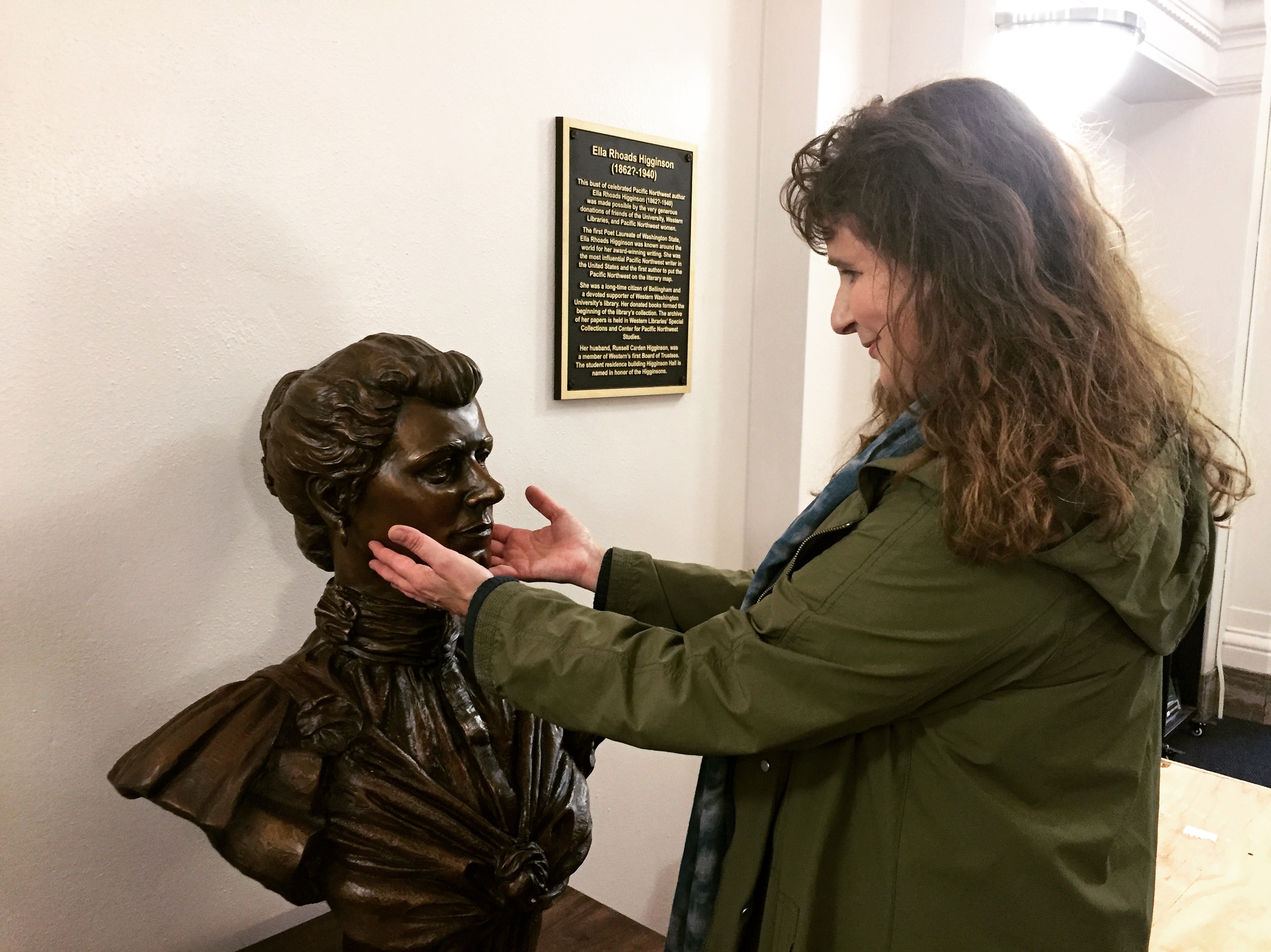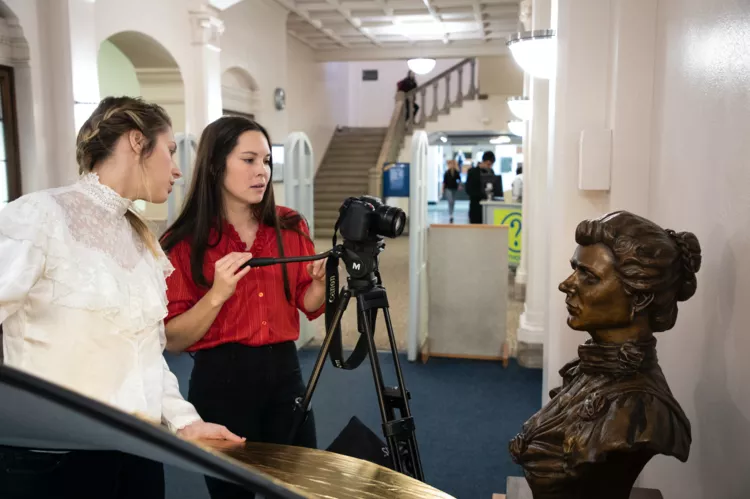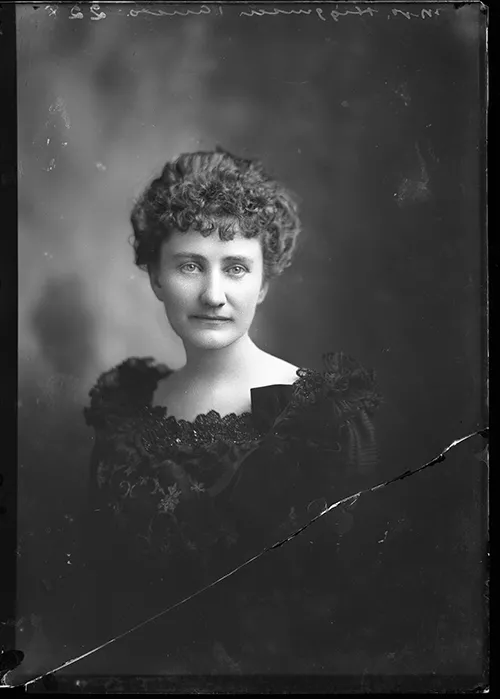Ella Higginson’s work is rooted in place—this place. As Washington state’s first poet laureate Higginson wrote about the Pacific Northwest in a time when it wasn’t very well known.
“She was the person who described the Pacific Northwest to the world,” says Laura Laffrado, professor at Western Washington University’s English Department. Laffrado has spoken in numerous venues about Higginson’s work and is always met with enthusiasm. It’s as if, Laffrado says, they’re hungry to read about their own place.
Higginson, globally famous at the height of her career, was among the first settlers of European descent to the Bellingham area, moving to Whatcom County in 1888. She wrote prolifically during the late 19th century and early 20th century, producing hundreds of short stories, poems, and newspaper articles, in addition to a novel, screenplay and a travel book.
Her work still feels relevant to modern discussion and policy, such as in the tension between wilderness conservation and the housing crisis.
Higginson depicted Nature with a capital N, before it had been suppressed or destroyed by and for those of European descent: vast mountains, wild waters and extensive forests, where trees grew so large and so closely not even a squirrel could squeeze between their massive trunks.
Higginson continues to inspire students because she set this region in print, Laffrado says, which is why Laffrado teaches Higginson’s work not only to English majors but also to others in her 200-level American literature General University Requirement courses. Often students who learn about Ella Higginson become inspired by the injustice of Higginson’s work being forgotten—and sometimes they’re even inspired to create their own works based on Higginson’s.
Talking to Crows, a Bellingham collective of multimedia artists and filmmakers, has adapted Higginson’s long-lost screen-play, “Just Like the Men,” for a modern audience. Laffrado found the screenplay among Higginson’s papers at the Center for Pacific Northwest Studies, as Higginson had shelved it after finding it a difficult sell, most likely due to the fact that its political commentary was not commercial enough. Higginson’s original screenplay, a silent film based on Frances Axtell’s campaign for Washington state senate, drew on Higginson’s experience as Axtell’s campaign manager. Axtell was one of the first women to hold office in the state of Washington.
Filmmakers Stacy Reynolds and Cassidy Brooks filmed the adaptation last summer and hope to send the film to the festival circuit later this year.
Just as Higginson’s work inspires its readers, Laffrado’s work also taps into a larger movement.
“Recovering Higginson,” Laffrado says, “also becomes part of a process of bringing forgotten writers back to prominence in particular women and people of color, the people who were mostly erased from the literary record… Every time you bring someone back, in this case, Ella Higginson, you remind people that there are writers who deserve to be read who at one point were very prominent.”
The first time Laura Laffrado talked about Ella Higginson was at the Whatcom Museum. When someone asked her, “What next?” Laffrado replied, “A bust would be nice.” The next time she mentioned it audience members dug into purses to donate to a fund Laffrado wouldn’t establish until November 2017.
A year later, a bronze bust of Ella Higginson was installed in the entrance to Wilson Library opposite the portrait of Higginson’s friend and Western’s first librarian, Mabel Zoe Wilson. Thanks to a generous grant from a philanthropic organization run by Higginson’s descendants, donations from community members and matching funds from Western, the fundraising campaign also provided for three plaques. The first plaque, beside Mabel Wilson’s portrait, contains Wilson’s bio. The second explains the origin of the quote above Edens Hall, “Here is the home of color and light,” from a Higginson sonnet about Western. The third marks the location of Higginson’s home in what is now between the Viking Union and Mathes Hall.
The plaques give Higginson a much more permanent presence on Western’s campus, Laffrado says. “Instead of people having to come to talk to me, you can walk around campus and actually see installed bronze information about Ella Higginson. It adds to the historical nature of the campus in what I think is a really valuable way.”
When asked that question, yet again, “What next?” Laffrado says she has an extensive list of what she wants to accomplish in order to recover Higginson’s literary reputation but at the top of that list: a biography. She says, “That is usually the landmark that signals an author has arrived.”
It’s clear that Ella Higginson isn’t just arriving after a long sojourn among those history temporarily forgot. With the bust and the plaques, with her name being pinned back on American literature’s map, she’s coming home.


